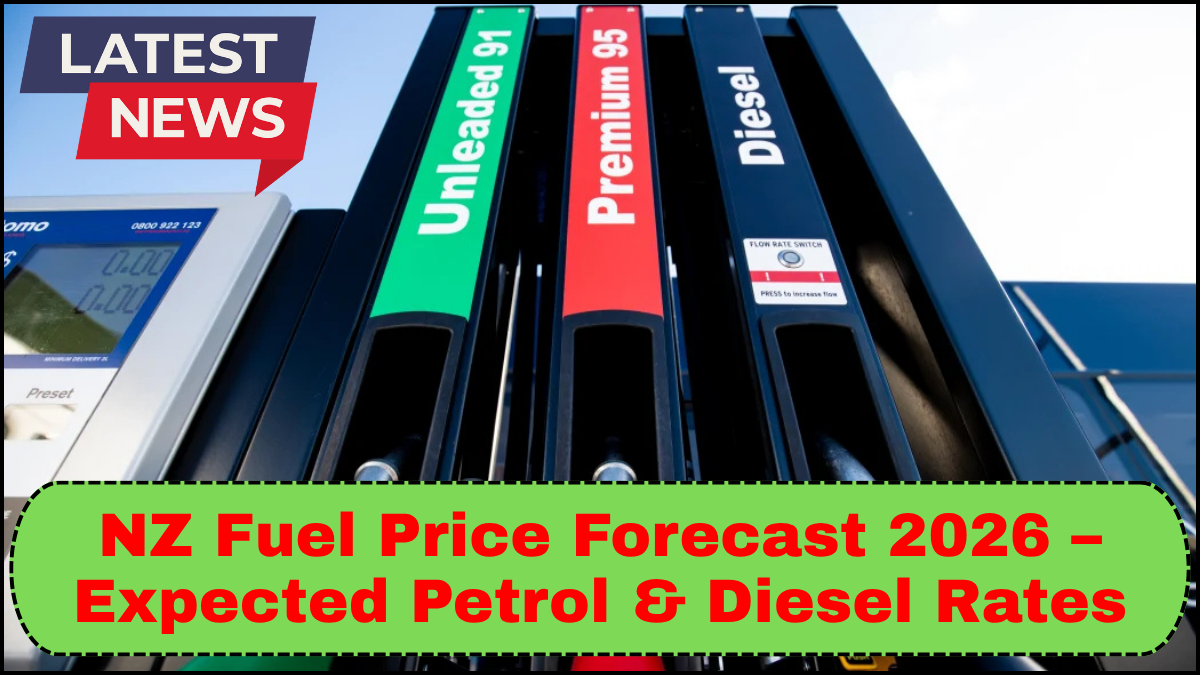Fuel prices are a crucial concern for New Zealand households, businesses, and policymakers alike. As 2026 approaches, the NZ fuel price forecast 2026 is drawing increasing attention due to evolving global oil markets, domestic tax policies, climate change strategies, and infrastructure changes. Understanding what lies ahead for petrol & diesel prices NZ is essential for budgeting, planning, and adapting to ongoing shifts in energy and transport sectors.

H3: Global Oil Market Trends and Their Influence
Petrol and diesel prices in New Zealand are heavily influenced by international crude oil prices. Global oil supply dynamics—such as OPEC production decisions, geopolitical tensions, and investment in oil exploration—can create ripple effects that impact local fuel rates.
In 2026, analysts predict a moderately volatile global oil market. While energy demand is expected to remain steady, increasing investments in renewable energy and electric vehicles could cap long-term crude price spikes. However, any short-term disruptions (e.g., Middle Eastern instability or shipping route blockages) may still cause sudden surges in global oil prices, which would directly affect NZ fuel costs.
H3: Domestic Factors Driving NZ Fuel Prices
The NZ fuel price forecast 2026 isn’t just about global oil. Local factors are equally significant:
-
Currency Exchange Rates: Since New Zealand imports all its refined fuel, the NZD/USD exchange rate plays a major role. A weaker New Zealand dollar can make fuel imports more expensive, raising pump prices.
-
Refining and Import Costs: The shutdown of the Marsden Point Oil Refinery and the full switch to imported refined fuel means pricing will be more sensitive to international shipping and processing costs.
-
Retail and Distribution Costs: Costs related to storage, transportation, and retail margins also influence prices. These tend to increase with inflation and infrastructure changes.
H3: The Fuel Tax Impact on 2026 Prices
A key element in the fuel price outlook is the fuel tax impact. In recent years, excise duties and emissions-related levies have steadily increased as part of the government’s broader environmental and transport funding strategies.
For 2026, new carbon pricing mechanisms under New Zealand’s Emissions Trading Scheme (ETS) could add further pressure. If ETS unit prices rise to meet climate targets, fuel distributors may pass on the additional cost to consumers, affecting both petrol & diesel prices NZ.
In addition, local governments may introduce or expand regional fuel taxes to fund public transport infrastructure. These taxes could push pump prices higher in urban centers such as Auckland or Wellington.
H3: The Electrification of Transport and Demand Trends
New Zealand’s rapid adoption of electric vehicles (EVs) is already shifting long-term fuel consumption patterns. While the transition will not eliminate petrol and diesel use by 2026, a significant drop in demand—especially in urban areas—is anticipated.
This could result in:
-
Greater price volatility as fixed costs are spread over fewer litres sold.
-
Strategic adjustments in fuel distribution, potentially raising rural prices due to reduced economies of scale.
-
Competitive pricing among retailers in high-EV adoption zones to maintain volume.
H3: Forecast Summary – What to Expect in 2026
Taking all factors into account, the NZ fuel price forecast 2026 suggests:
-
Petrol prices may range between $2.80 and $3.20 per litre, depending on global crude trends, taxes, and currency fluctuations.
-
Diesel prices could fluctuate between $2.50 and $3.00 per litre, influenced by the same variables but with slightly less tax burden compared to petrol.
-
High-emission diesel may face increased levies under evolving climate policies, narrowing the price gap between fuel types.
H3: How Consumers Can Prepare
Given the uncertainties, consumers and businesses can take proactive steps:
-
Invest in fuel-efficient vehicles or hybrid/EV alternatives.
-
Monitor pump prices using fuel comparison apps.
-
Optimize routes for logistics operations to reduce fuel usage.
-
Stay informed about policy changes that could affect fuel tax rates.
Frequently Asked Questions (FAQs)
Q1: Why do New Zealand fuel prices depend on the global oil market?
Because New Zealand imports 100% of its refined fuel, fluctuations in international oil prices and freight costs have a direct impact on local pump prices.
Q2: How much of the fuel price is tax?
As of now, more than 50% of the petrol price at the pump can consist of excise duty, GST, and ETS-related charges. This figure may rise further by 2026 if climate policies tighten.
Q3: Will fuel prices continue rising after 2026?
While short-term volatility is expected, long-term trends may see gradual easing if EV adoption significantly reduces demand. However, tax adjustments may offset these savings.
Q4: How does the NZ fuel price forecast affect diesel differently from petrol?
Diesel generally faces a lower excise tax but could be more affected by carbon pricing due to higher emissions per litre. Commercial users may see changes in RUC (Road User Charges) as well.
Q5: Can regional fuel taxes vary across NZ?
Yes, currently Auckland has a regional fuel tax. Other cities could implement similar levies to support transport infrastructure, affecting local prices.
click here to learn more